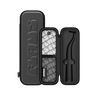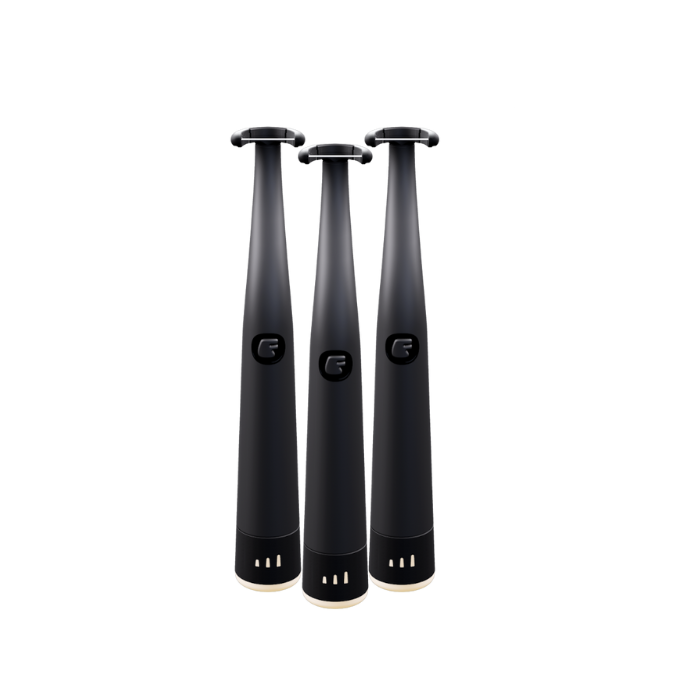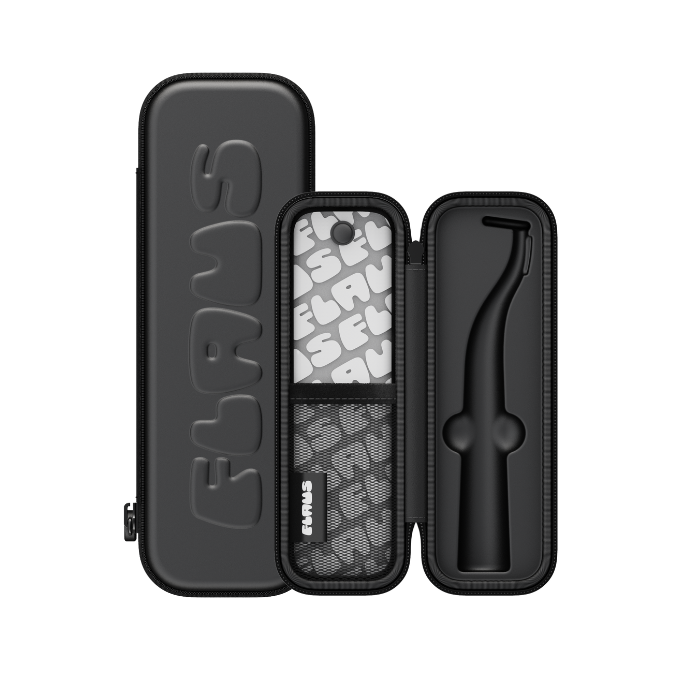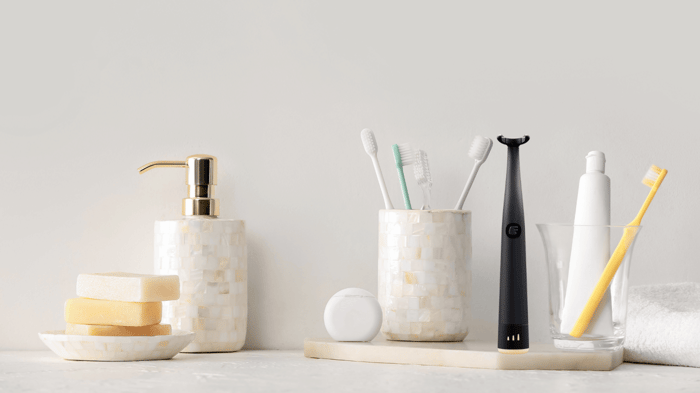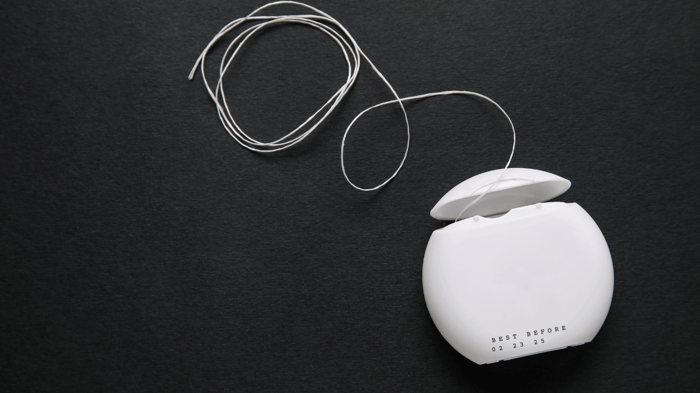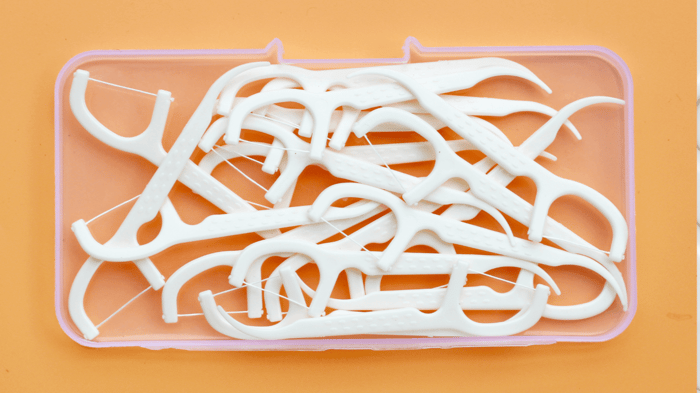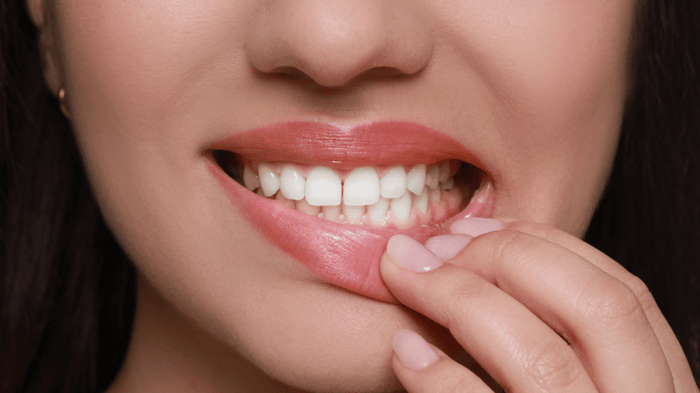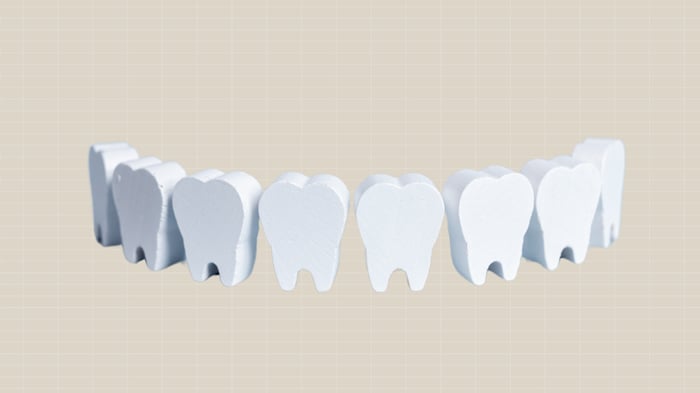POV: You’re doing your nightly routine. You’ve washed your face, done your skin care and now you’re ready for some good oral (health people… oral health). Your first step is flossing and you’re feeling great that you’ve finally incorporated flossing into your daily ritual. The last thing on your mind is floss stuck in teeth.
So, you're C-shaping away with the floss and then it happens - floss stuck in teeth.... and you are having the hardest time getting it out.
If you've ever wondered why floss sometimes gets stuck in your teeth or how to deal with it, we’ve got the 411. So grab your Flaus and let's embark on this floss-tastic journey together!
Why Does Floss Get Stuck in Your Teeth?
The answer to this lies in the nooks and crannies of our pearly whites and there are many contributing factors to why floss might get stuck in your teeth:
Tooth Anatomy: One of the primary reasons floss gets stuck in your teeth lies in their unique anatomy. Your teeth have various contours especially in the areas where they touch each other. These spaces, known as interdental spaces, are perfect hiding spots for leftover food particles, plaque, and, of course, floss. When you slide floss between your teeth, it encounters these irregular surfaces, which can trap the floss and prevent it from gliding smoothly.
Tight Contact Points: Some people have teeth that are tightly packed together, leaving very little room for floss to pass through without getting stuck.
Rough or Roughened Surfaces: Tooth surfaces can become rough or roughened due to tooth decay, dental restorations, etc. When floss encounters these rough surfaces, it can catch and get stuck rather than glide effortlessly through.
Waxed vs. Unwaxed Floss: Waxed floss is coated with a thin layer of wax, which can help it slide smoothly between teeth. On the other hand, unwaxed floss lacks this coating and may be more prone to getting caught on rough surfaces or tight spaces.
Flossing Technique: Yes, even the way you floss can impact whether it gets stuck or not. If you use a forceful sawing motion rather than a gentle back-and-forth motion, you may inadvertently force the floss into tight spots, increasing the likelihood of it getting lodged.
Dental Work:If you have dental work like braces, dental bridges, or dental implants, flossing can be trickier. These dental fixtures can create additional obstacles for the floss, making it more likely to get stuck or tangled
What to Do When Floss Is Stuck in Teeth / How to Remove Floss Stuck in Teeth
We know floss is supposed to help you get things *out* of your teeth - not get more things stuck in them! Here are some tips + tricks on how to get floss out of your teeth if it gets stuck:
Gently Wiggle and Slide: Give the floss a gentle wiggle and slide it back and forth in the direction it came from. Sometimes, a little maneuvering can loosen the floss and set it free
Try a Different Angle: Try adjusting the angle of the floss and try to approach the trapped area from a slightly different direction.
Be Gentle, Not Forceful: Resist the urge to yank the floss out aggressively. Doing so could harm your gums or lead to breakage, leaving a part of the floss stuck in your teeth.
Electric Flossers: Electric flossers, like Flaus, make flossing in tight spaces easier than ever before. With 10,000 sonic vibrations per minute, the vibrations help move the floss in and out of tight spaces.
Risk of Leaving It Between Your Teeth
Leaving floss stuck between your teeth might seem like a minor inconvenience, but it can actually have some potential risks and consequences for your oral health. Here are the primary risks associated with not removing floss that's trapped between your teeth:
Irritation and Discomfort: The trapped floss may press against your gums, leading to redness, swelling, and tenderness. This irritation can make flossing or even eating more painful.
Buildup of Bacteria and Plaque: One of the most significant risks of leaving floss lodged between your teeth is that it creates a cozy hiding spot for bacteria and food particles. Over time, these trapped debris can lead to the formation of plaque, a sticky film of bacteria that coats your teeth (which can lead to decay)
Bad Breath (Halitosis): As bacteria feast on the trapped food particles and produce byproducts, it can result in foul-smelling breath, commonly known as bad breath or halitosis.
Risk of Gum Infections: The subsequent bacterial buildup from trapped floss can increase the risk of gum infections, such as gingivitis and periodontitis. These infections can cause gum inflammation, bleeding, and, if left untreated, may lead to more severe gum and bone damage.
Dental Decay and Cavities: When plaque remains on your teeth for an extended period, the acids produced by the bacteria can erode the tooth enamel, leading to dental cavities.
How to Floss Properly to Avoid Floss Being Stuck in Your Teeth
It’s important to use proper flossing techniques - these techniques will help floss glide between teeth without glitches.
Choose the right floss: Experiment with various floss options (for more information read our article on different floss types here) to find the one that works best for you. Some people find that thinner floss slides more easily between teeth, while others prefer the thickness of tape floss.
Be gentle but thorough: Avoid snapping the floss between your teeth, as this can lead to the floss getting wedged. Instead, use a gentle back-and-forth motion and follow the curve of each tooth to clean both sides thoroughly.
Take your time: Rushing through flossing can increase the chances of the floss getting trapped. Take a few extra seconds for each tooth, ensuring you clean along the gumline and between teeth.
Use proper technique: Angle the floss against each tooth in a C-shape, reaching just below the gumline. Gently slide the floss up and down, removing any plaque or food particles. Repeat this process for each tooth, using a clean section of floss each time.
Be cautious with tight spaces: If you encounter tight spaces between teeth, take extra care and use a gentle sawing motion to guide the floss through without forcing it.
Consider an electric flosser: If you find traditional floss difficult to handle or get stuck frequently, consider using an electric flosser, like Flaus, that has a motor and 10,000 sonic vibrations per minute that allows the floss to go in and out of your teeth with ease.
When to See a Dentist
If none of the above tips + tricks have helped to remove the stuck floss, it’s advised to see a dental professional as soon as possible. We know that leaving the floss trapped between your teeth for an extended period can lead to issues such as gum irritation, bad breath due and excess plaque, increasing the risk of cavities and gum disease.
To avoid these complications, schedule an appointment with your dentist promptly. They possess the tools and expertise to safely remove the floss without causing damage to your teeth or gums. Additionally, while you're there, your dentist can perform a thorough examination to address any other dental concerns, ensuring your oral health is in top condition. Remember, regular dental check-ups are vital to maintaining a healthy and radiant smile.
Conclusion
While leaving floss stuck between your teeth might not seem like a major issue at first, it can lead to several unwanted consequences for your oral health. To prevent these risks, it's essential to floss properly, be gentle with your teeth and gums, and ensure you remove any trapped floss as soon as possible. Regular dental check-ups and professional cleanings can also help to keep your smile healthy and free from potential flossy mishaps. So, don't let floss become an unintended dental accessory and take care of those precious pearly whites! 🦷



